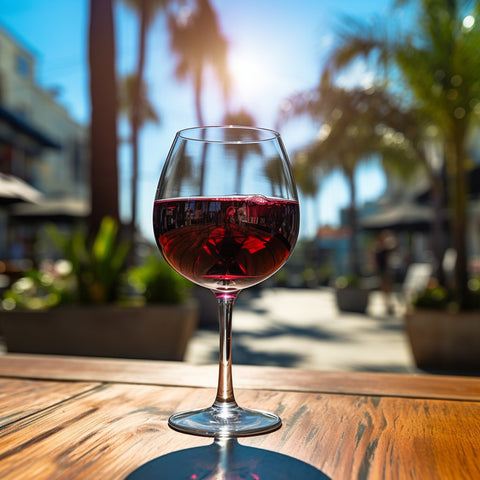America, our nation known for its rapid pace and love for instant gratification, has a unique relationship with alcohol consumption. While beer and hard liquor have long held the spotlight, wine has often lingered in the background. This can be attributed to the cultural contrast between the slow, deliberate art of wine appreciation and America's perpetual need for speed. In this entry, we discuss the reasons behind wine's relatively modest popularity in the United States, exploring how its inherent slow motion nature clashes with the fast-paced ethos that has come to define American culture.
The Art of Wine Appreciation
Unlike beer, which can be shotgunned in a matter of seconds, or hard liquor that is frequently consumed as a quick shot, wine is an elixir of complexity. Maybe that's why I'm still waiting for wine pong to become a thing. Wine's flavors unfold gradually, inviting us to engage all our senses and take our time and--chill.
Wine is never smooth, it may be satiny mid palate with a lingering old world finish but it is never smooth like a shot of bourbon or lager on tap. Wine demands patience. I recall tasting with a sommelier who berated me (only to make the point, he was the coolest somm ever) for not admiring the garnet hue of a Virginian Nebbiolo. (Yes, Virginia makes Nebbiolo.)
From the uncorking of the bottle to the gentle swirl of the glass that aerates the liquid, every step of the wine-drinking process is a deliberate one. Similar to the administration of ketchup from squeezable ketchup bottles. Not! The act of sipping, swishing (are you a swisher, let me know in the comments), and savoring allows the drinker to connect with the agricultural product on a sensory and intellectual level. This unhurried approach stands in stark contrast to America's fast-paced culture, where efficiency and speed are often prioritized over depth and contemplation. Please pass the squeezable ketchup.
America's Need for Speed
The concept of "time is money" has been deeply ingrained in American culture. Who hasn't read the One Minute Manager. From the Industrial Revolution to the digital age, the pursuit of efficiency and productivity has fueled the nation's growth and prosperity. In this context, the idea of sitting down to slowly savor a glass of wine may seem counterintuitive. It's a natural conclusion where multitasking is celebrated and being busy is a badge of honor, wine's leisurely consumption can feel at odds with the rapid tempo of modern life. The very act of slowing down to appreciate a limited production Napa Cab may be seen as a luxury that many cannot afford in a world where every moment is precious.
Cultural Norms and Social Influence
Beer and hard liquor have cemented their place in American culture, partly due to their role in social settings and rituals. Beer is synonymous with sports events, barbecues, and casual gatherings, while hard liquor is often associated with celebrations and nightlife. These beverages lend themselves well to quick, boisterous consumption, aligning with the fast-paced rhythm of American social life. Full disclosure: I was the guy at the tailgate with the decanter and bottle of Grapponi Mazzi.
Wine, on the other hand, has historically been linked with more formal occasions, accented by Michelin stars and luxury stemware. Its association with refinement and exclusivity has created a perception that wine is reserved for special moments rather than everyday enjoyment. Screw tops are helping dispel the notion. The stelvin closures are great for when I leave the Durand on the subway. Lol. This perception, coupled with the American preference for rapid consumption--chug chug chug--may contribute to wine's relatively limited popularity.
Wrap Up
The clash between wine's slow, nuanced appreciation and America's need for speed is a fascinating cultural dynamic. While wine may not be as widely embraced in the United States as beer or hard liquor, its growing popularity in recent years suggests a shift in attitudes. In fact, the premium wine category is on fire. White Zinfandel was relegated to the J.V. team years ago. Americans want big reds and melony sauvignon blanc. Of course, as Americans continue to explore diverse tastes and experiences, there is an opportunity for wine to have more relevance in our country's vibrant drinking culture.
<Kenny Loggin's "Danger Zone" blares from the entrance of a beer garden>




Comments (0)
There are no comments for this article. Be the first one to leave a message!